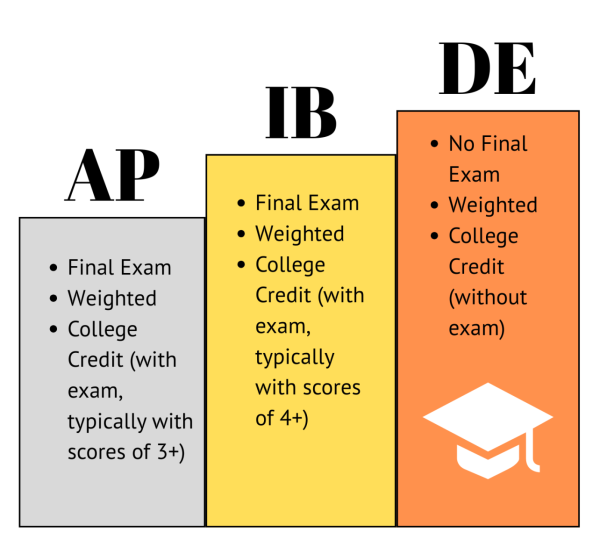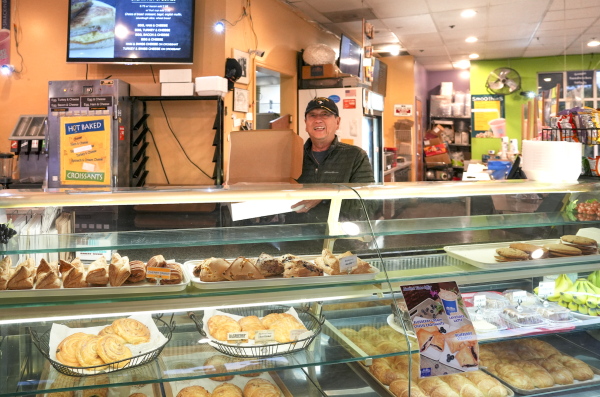RJUHSD expands school safety measures
RJUHSD has debuted a locked-door policy and a student notification feature from Catapult EMS this school year.
The new school year marks the enactment of two new safety systems in the Roseville Joint Union High School District: a locked-door policy and a student notification feature from Catapult Emergency Management System (EMS).
Previously, classroom doors were frequently kept locked but propped open with a Lock-Blok, which is a rubber instrument with an appendage that can be slipped between the door and the doorjamb so the lock does not click in. During the pandemic, teachers were advised to prop open doors for better air circulation in the classroom.
“I think (the locked-door policy) sends a message of safety. … Having to go out to lock doors (during emergencies) was always something we questioned,” Lisa Vaughan, a math teacher at Granite Bay High School, said.
The district consulted the Roseville Police Department, the Placer County Sheriff’s Office and the local FBI office when making the decision to carry out the locked-door policy. According to a report that the Sandy Hook Advisory Commission compiled, an active shooter has never “breached a locked classroom door.”
“The data is pretty significant,” Robert Hasty, RJUHSD executive director of human resources, said. “Unfortunately, if there had been locked doors (at schools where shootings have occurred), the number of fatalities would have been significantly reduced. When you see how significant it drops, you just go, ‘Okay, how do we not do something like (lock classroom doors)?’”
Once students have exited the classroom during instruction time to use the bathroom, for example, they are likely readmitted to the room by another student—usually whoever sits closest to the door. Some teachers have assigned particular students to receive extra credit points as compensation for being in charge of opening the door during class time.
“We do know there are pieces of this (policy) where it will be an added inconvenience… but we felt (that it’s) a minor inconvenience,” Hasty said. “It’s something that really shouldn’t play a large factor when we’re talking about saving even one life.”
According to data about the 2019-2020 school year from the Digest of Education Statistics, 73.1% of classrooms had locks that could be activated from inside the classroom.
“I feel like students have kind of accepted that (locking doors is) our new norm and that’s how we do things. I appreciate that students are trying to take care of their business in between classes (and) maybe not leave as much during the class, but sometimes it happens,” Vaughan said. “But we have to deal with it.”
Historically, RJUHSD has used Catapult as an anonymous tipping platform. The district has implemented the student notification component of the Catapult EMS system this year, which it is intended to quickly inform all students of code red emergency situations, no matter their location on campus. A one-way message sent from administration will pop up on students’ phones if they have opted into the system. The software does not send out any information from students’ phones.
Before students in the whole district could opt in to the notifications, there was a successful pilot of the system at West Park High School.
“We knew kids were getting the messages,” Hasty said. “We knew that a lot of kids signed up for it and had it on their phone. And so we knew that it was something that people wanted, and that made us feel good.”
On Wednesday, Aug. 24, the student notification system was tested unexpectedly at GBHS when the fire alarms went off during the transition between first and second period. Students who had opted into the system received a code red notification.
“I got the message on my phone saying there was a fire alert, but no other information was given (at the time of evacuation),” junior Celia Do said. “It’s no different whether you turn on the alarm… or if you send out a notification.”
Per an email sent by the high school, the false alarm may have been caused by “an area that was being painted.”
“I consider (the unanticipated fire evacuation) a pop quiz that we failed. It was actually a gift because there wasn’t anything serious, and what we realized is none of us were prepared for what happens in between (classes),” Vaughan said.
The district is considering the prospect of releasing the notifications to parents in coming years so they are informed in real time of emergency situations at their children’s schools. However, false alarms may cause needless panic for parents and an influx of phone calls to the school, especially if updates are not prompt.
“As a parent myself, I would appreciate (emergency notifications from Catapult),” assistant principal Sara Wetteland said. “As an administrator, we’ll see how it goes.”

Kate is a senior and Editor of the Opinion section. This is her second year on the Gazette staff.










Mitra • Sep 23, 2022 at 11:00 am
I think that the locked door policy is smart and a good way to keep everyone safe.
Claire • Sep 23, 2022 at 10:55 am
I appreciate the new security measures at Granite Bay, and personally, they make me feel safer on campus. I’m also glad that the school realized how badly the evacuation went and are making efforts to improve the response during any future emergencies. I hope that they will run much smoother and safer moving forward.
Holden • Sep 16, 2022 at 10:55 am
Overall, I think the amount of research and thought that was put into this was reasonable. This is a valid concern that should be brought to more people’s attention, the sad reality of the situation is that we need to do this now, and it’s for the better of everyone.
Meadow • Sep 16, 2022 at 8:54 am
I think doors should definitely be locked, and notifications should only be sent to parents if there’s a real emergency.